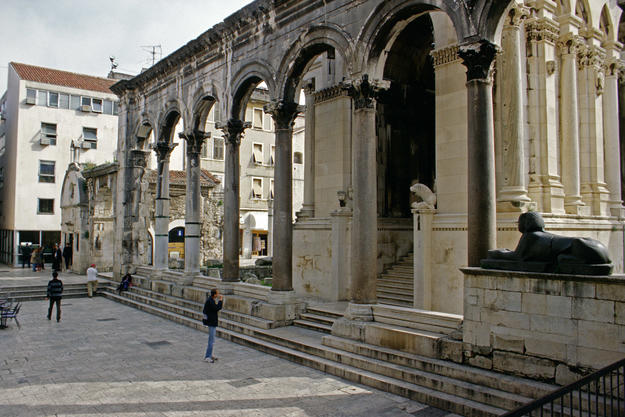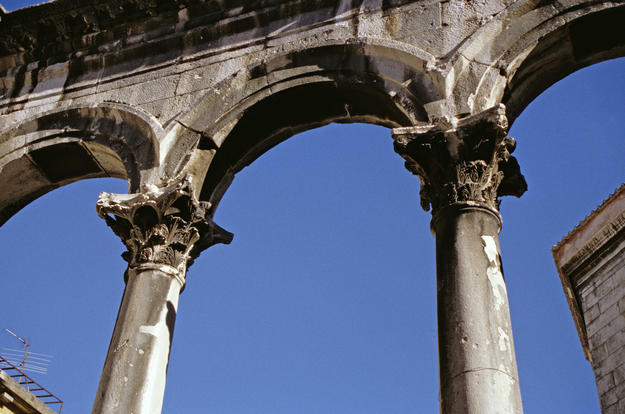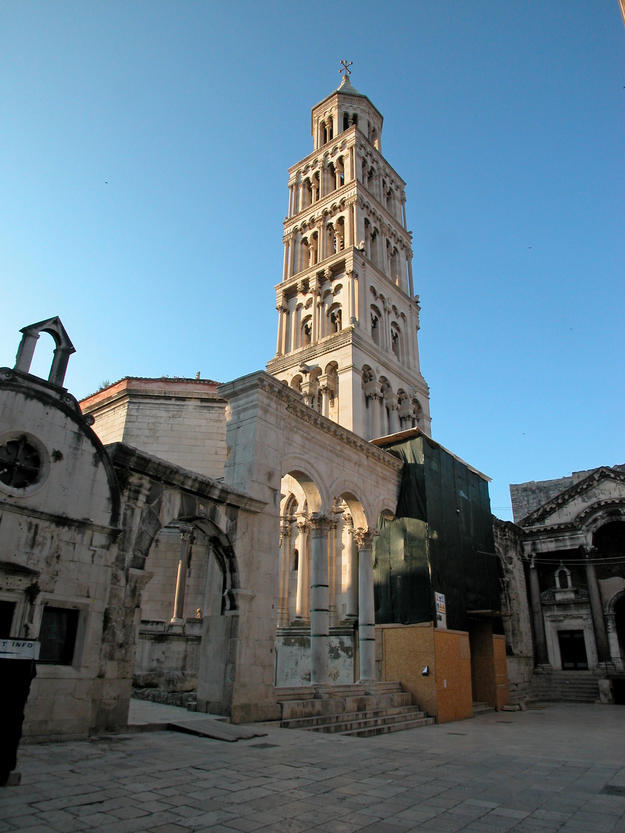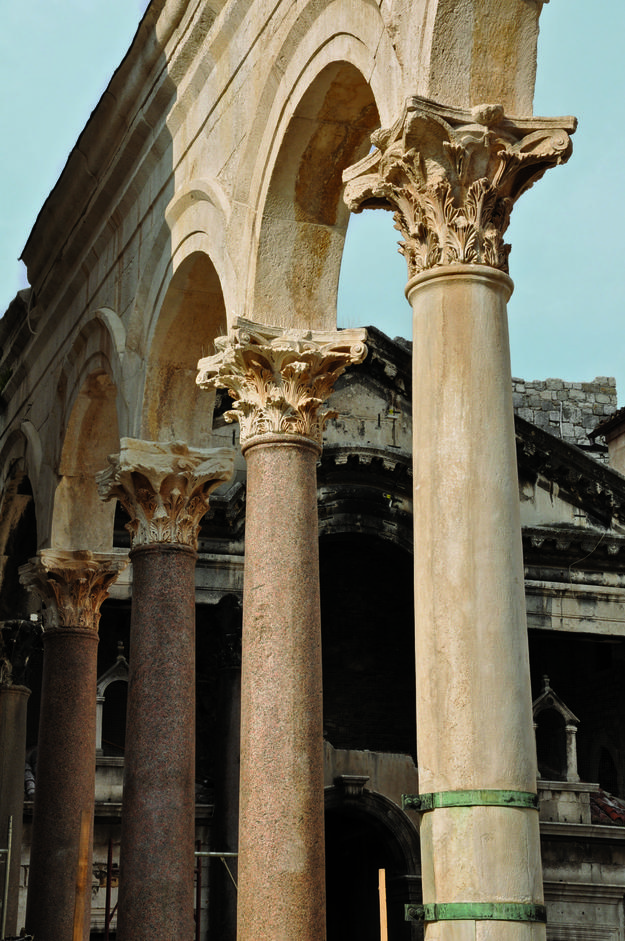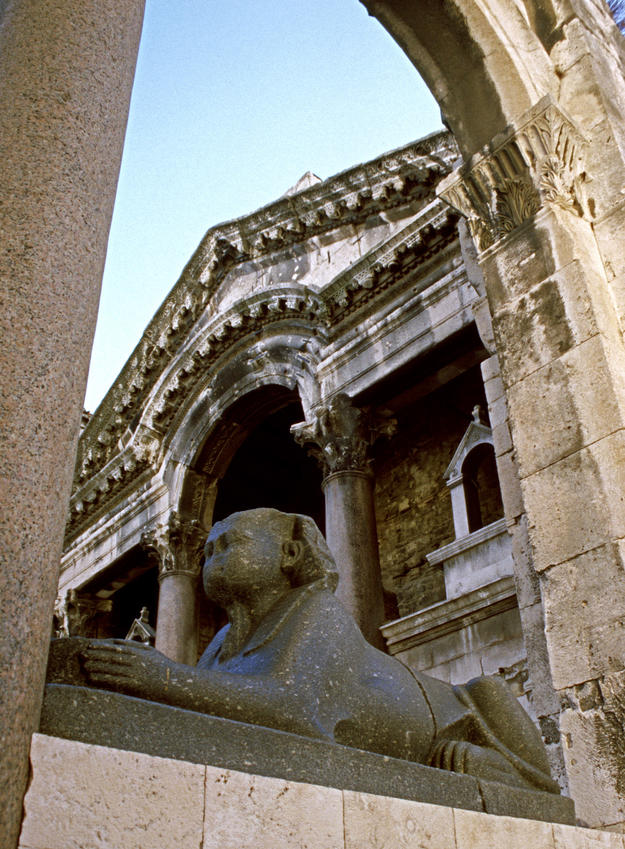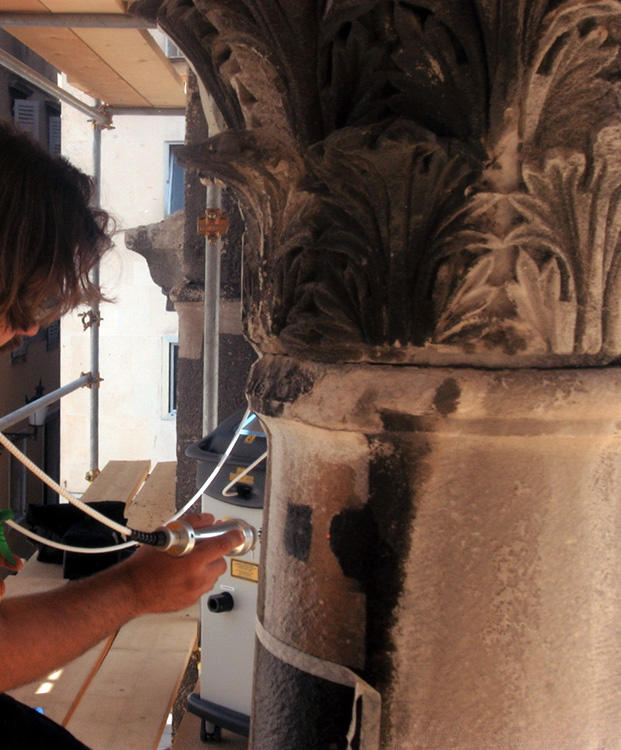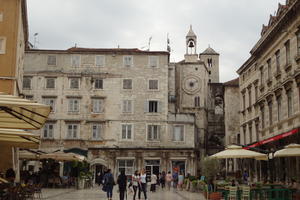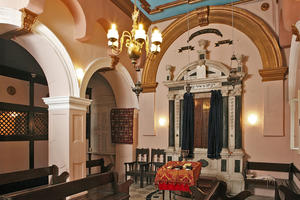Diocletian's Palace
Diocletian was 39 years old when he became Roman Emperor in A.D. 284. He ruled for two decades until illness forced him to abdicate the throne at the age of 60 and retreat to a spectacular palace on the Dalmatian coast in the modern-day city of Split, Croatia. Constructed between the late third and early fourth centuries, the vast palace complex—7.5 acres (3.04 hectares) in size—was built of local marble and limestone. The fortress-like structure was part military garrison, part imperial residence. Diocletian’s luxurious quarters included three temples, an impressive mausoleum, and a monumental colonnaded courtyard or peristyle, sections of which have survived more than 1,500 years.
Rehabilitating a famed urban center
Diocletian’s Palace was included on the 1996 World Monuments Watch. Between 2002 and 2010 we helped fund a number of projects at the palace, including the repair and stabilization of the roof of the Temple of Jupiter and conservation of several segments of the peristyle. Work on the peristyle was particularly lengthy because its surface was encrusted with centuries of dust and soot. The Croatian Conservation Institute led the meticulous task of cleaning the ancient colonnade as well as the Romanesque, Gothic, Renaissance, and Baroque sections of the courtyard.
Conservation efforts funded by American Express began in 2002 and focused on documentation, geotechnical and archaeological investigations, and conservation treatments. The stone of the peristyle was successfully cleaned using an innovative laser method and desalination techniques. In addition, previously installed corroded iron clamps were removed and replaced by stainless steel anchors. Where the iron clamps could not be removed, the connections were treated with a corrosion inhibitor solution. Conservators worked to consolidate the surfaces of the columns, capitals, and entablature to increase the stone’s resistance to further weathering. Our involvement at Diocletian’s Palace concluded in 2010 and served as a catalyst for additional financial support that allowed for the full conservation of the peristyle.

